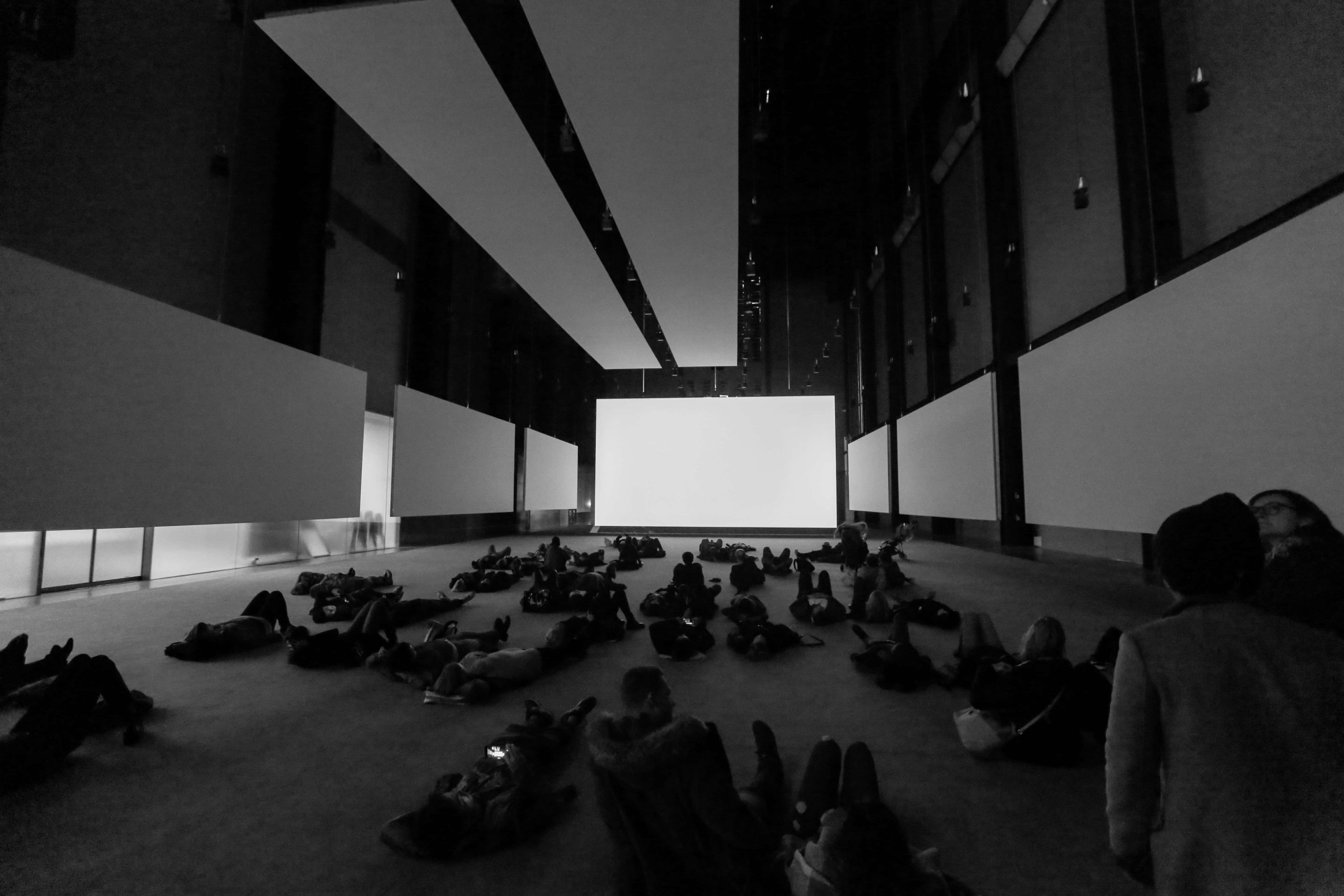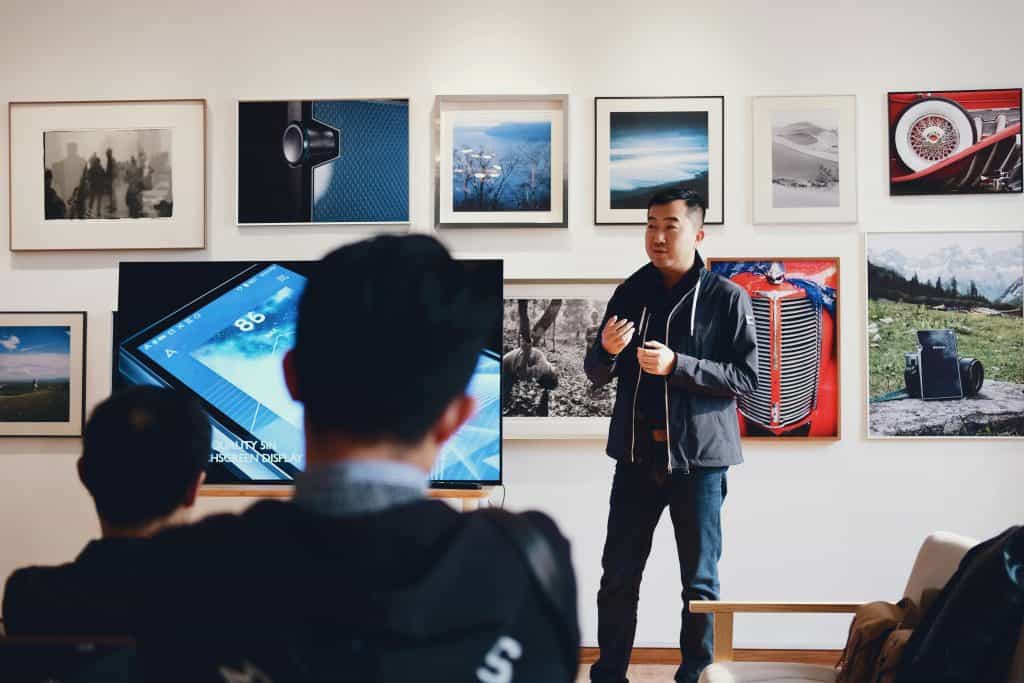
30 Mar Monetizing Virtual Art Exhibition Tours
Virtual art exhibitions have surged in popularity, offering immersive experiences accessible to anyone with an internet connection. As the virtual art world expands, so does the need for effective monetization strategies. Virtual art exhibitions have revolutionized the way we engage with art, breaking down physical barriers and democratizing access to cultural experiences. However, the challenge lies in monetizing these virtual tours to sustain artistic endeavors and support creators.
Ticketing Strategies

Photo by Cristofer Maximilian
Ticket Pricing Models
Ticket pricing models play a pivotal role in shaping visitor experiences and revenue generation for various events and attractions. The flat fee approach, characterized by a single price point, offers simplicity in the purchasing process, yet it may deter price-sensitive visitors who seek more affordable options. Conversely, tiered pricing strategies provide a range of ticket options to accommodate diverse preferences and budgets, thereby enhancing overall accessibility and inclusivity. Meanwhile, dynamic pricing, which involves adjusting ticket prices based on factors like demand and user demographics, presents an opportunity to maximize revenue potential. However, implementing dynamic pricing requires vigilant monitoring and strategic planning to ensure effectiveness while maintaining customer satisfaction. Each pricing model carries its own set of advantages and considerations, influencing decisions made by organizers and businesses to best serve their target audience and financial objectives.
Ticketing Platforms
When contemplating ticketing platforms, organizers, and businesses confront crucial decisions regarding integration and functionality. One option involves integrating with established platforms such as Eventbrite, which streamlines the ticketing process and capitalizes on existing user bases. Alternatively, developing a custom solution tailored to specific needs offers greater flexibility and control over features and branding. Regardless of the chosen route, several factors merit consideration. Security stands as a paramount concern, necessitating robust measures to safeguard sensitive information and transactions. Additionally, prioritizing ease of use ensures a seamless experience for both event organizers and ticket purchasers. Transparent fee structures further enhance trust and mitigate unexpected costs, fostering positive relationships with customers. By carefully weighing these factors, stakeholders can select a ticketing platform that aligns with their objectives while delivering a reliable and user-friendly solution.
Donation Strategies

Photo by RDNE Stock project
Call to Action
To enhance engagement and support for the arts, it’s crucial to implement a strong call-to-action strategy. Compelling messaging lies at the heart of this approach, as it involves crafting persuasive narratives that underscore the significance of backing the arts and nurturing creativity within communities. Donation options play a pivotal role in facilitating contributions, offering supporters flexibility through choices such as one-time or recurring monthly donations. These options not only cater to diverse donor preferences but also amplify the potential for long-term sustainability. Furthermore, the implementation of matching donation programs serves to incentivize sponsor participation by doubling the impact of contributions made. By encouraging collaborative efforts and leveraging matching initiatives, organizations can effectively galvanize support and foster a thriving environment for artistic expression and cultural enrichment.
Transparency and Impact Reporting
Transparency and impact reporting serve as foundational pillars in fostering trust and engagement within the realm of supporting the arts. Clear communication is paramount in this regard, as it entails openly conveying how donations directly influence artists and bolster the virtual exhibition ecosystem. By providing transparency on how funds are utilized, donors gain insight into the tangible impact of their contributions, fostering a sense of accountability and trust in the organization. Additionally, sharing success stories and tangible examples further elucidates the transformative power of donations within the art community. These narratives serve to humanize the impact, showcasing real-life instances where financial support has facilitated artistic endeavors, enriched cultural experiences, and empowered individuals to thrive creatively. Through transparent communication and the dissemination of success stories, organizations can strengthen connections with donors, cultivate a sense of community, and inspire continued support for the arts.
Sponsorship Strategies

Photo by 祝 鹤槐
Identifying Potential Sponsors
Identifying potential sponsors entails a strategic approach aimed at fostering mutually beneficial partnerships within the art world and cultural landscape. Alignment is key in this process, as organizations should seek out companies whose values and interests align with those of the art community. By forging partnerships with like-minded entities, both parties can leverage shared objectives to amplify their impact and reach. Moreover, audience targeting plays a pivotal role in attracting sponsors seeking to engage with the diverse virtual tour audience and bolster their brand visibility. By aligning sponsorship opportunities with the interests and demographics of the virtual tour audience, organizations can offer sponsors a platform to connect authentically with their target market while simultaneously supporting artistic endeavors. Through thoughtful consideration of alignment and audience targeting, organizations can effectively identify potential sponsors and cultivate meaningful relationships that contribute to the sustainability and growth of cultural initiatives.
Sponsorship Packages
Crafting sponsorship packages requires a thoughtful and strategic approach to cater to diverse budget levels and marketing objectives while ensuring alignment with sponsor interests. Utilizing a tiered structure allows organizations to design sponsorship packages with varying levels of benefits, providing options that accommodate the financial capabilities and marketing goals of potential sponsors. By offering different tiers, sponsors can select the package that best suits their needs while still supporting the initiative. Moreover, customization is essential in tailoring sponsorship packages to align closely with sponsor interests and objectives. This entails providing opportunities for brand promotion and engagement that resonate with the sponsor’s target audience and marketing strategies. By offering unique and tailored benefits within each sponsorship package, organizations can enhance the value proposition for sponsors and foster long-term, mutually beneficial partnerships. Through a combination of tiered structures and customization, sponsorship packages can effectively meet the diverse needs of sponsors while supporting the sustainability and success of cultural initiatives.
Activation Strategies
Activation strategies play a pivotal role in enhancing the virtual tour experience, aiming to seamlessly integrate sponsor branding while preserving the artistic integrity of the tour. This approach ensures that sponsors gain visibility without overshadowing the primary content. Moreover, audience engagement stands as a key component, with interactive features like Q&A sessions and exclusive content fostering meaningful connections between sponsors and participants. These strategies not only elevate the tour’s appeal but also create valuable opportunities for sponsors to engage with their target audience in a dynamic and impactful manner, ultimately enhancing the overall tour experience for all involved parties.

Photo by Kelly Sikkema
Conclusion
Monetizing virtual art exhibition tours requires careful consideration of audience preferences and innovative approaches to revenue generation. By embracing ticketing, donation, and sponsorship strategies, art organizations can sustainably support artists while providing enriching experiences to audiences worldwide. As virtual art experiences continue to evolve, staying adaptable to emerging trends and technologies will be key to future success in monetization efforts.
Key Takeaways
Key Takeaways | Considerations | Implementation Strategies |
Ticketing Strategies | Choose between flat fee, tiered, or dynamic pricing models. | Integrate with platforms like Eventbrite or develop custom solutions. |
Prioritize security, ease of use, and transparent fee structures. | ||
Donation Strategies | Implement compelling call-to-action messaging for support. | Provide options like one-time and recurring donations. |
Ensure transparency in fund utilization and impact reporting. | Create matching donation programs to incentivize participation. | |
Sponsorship Strategies | Identify sponsors aligned with the art community’s values and interests. | Craft tiered sponsorship packages catering to diverse budgets. |
Target sponsors based on audience demographics for authenticity. | Seamlessly integrate sponsor |
FAQs
How can I determine the right ticket price for my virtual art exhibition?
Determining the appropriate ticket price for your virtual art exhibition involves several considerations. Firstly, conducting comprehensive market research is essential to gauge the pricing expectations of your target audience and understand their willingness to pay for access to your exhibition. Through surveys, interviews, and analyzing similar virtual events, you can gather valuable insights into what attendees might consider a reasonable price point. Additionally, experimenting with different pricing models, such as early bird discounts or tiered ticketing, can help you assess consumer response and refine your pricing strategy accordingly. Soliciting feedback from your audience throughout this process will be instrumental in fine-tuning your approach and ensuring that the ticket price aligns with perceived value.
What types of benefits can sponsors expect from supporting virtual art exhibitions?
Sponsors supporting virtual art exhibitions stand to gain numerous benefits from their investment. Firstly, they can expect enhanced brand visibility as their logos and branding are prominently displayed throughout the virtual exhibition platform, reaching a diverse audience of art enthusiasts and potential customers. Moreover, sponsors can capitalize on opportunities for meaningful engagement by aligning their brand with the artistic community and participating in curated events or interactive experiences within the exhibition. Tailored sponsorship packages can offer sponsors unique opportunities to showcase their commitment to supporting the arts while fostering connections with their target demographic.
How can I ensure transparency in donation management?
Transparency in donation management is paramount to maintaining trust and accountability within your community of supporters. To ensure transparency, implement clear reporting mechanisms that outline how donations are collected, allocated, and utilized to support artists and sustain virtual exhibition initiatives. Providing regular updates on the progress of fundraising efforts and detailing how donations have contributed to specific projects or initiatives will demonstrate your commitment to responsible stewardship of donor funds. Additionally, offering transparency in financial reporting and budget allocation processes will help foster a sense of openness and inclusivity among donors, encouraging continued support for your virtual art exhibition endeavors.
Explore strategies through “Audience Engagement in Physical Art Exhibitions” for fostering audience engagement and interaction within physical art exhibition spaces.

